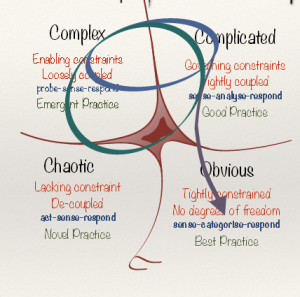The challenges of managing in today’s worlds are tough, very tough and demanding. It is so volatile, potentially disruptive and full of risk. Organizations are simply struggling to shed their clothes in the 20th century and find a way to smoothly manage to become more adaptable and agile in form. They are adjusting to offer consistent responses to instability in the most effective ways, to keep adapting to the consistent market challenges, and in so doing profiting from meeting that latest challenge or disruptive opportunity.
The problem is you simply can’t manage this smoothly, it will be highly disruptive as the organization re-equips themselves and learns, often in the hardest way possible, through failure, through experimentation, through risk-taking. Innovation is increasingly seen as the pathway forward in capturing growth and grabbing any advantage, even if these are increasingly transient. Yet as we look towards building our innovation capabilities we need to work in totally different ways and see ‘things’ in new ways.
Innovation in itself is also a force of instability and we need to find ways to embrace much of its uncertainties by understanding its dynamics. We need to have a major shift in our organizational thinking, needed to find the appropriate new balance within those dual ‘tensions’ of ‘stability’ through efficiency, with its opposite, ‘change’ driven by innovation. It is these dynamic forces within the world we work that need us to respond by building that capacity for managing those ‘dynamic’ innovation capabilities, that today’s markets are requiring and organizations are needing to master.
Continue reading “The world is working within increased complexity, are you?”





